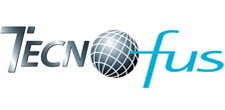TECNO FUS
TECNO_FUS is a Programme financed by the Spanish Government (by means of a Consolider Ingenio 2010 grant by MICINN, Ref. CSD2008-0079) and oriented towards the development of technologies associated with the Breeding blanket of future fusion power plants.
Generally speaking the purpose of the breeding blanket is twofold: to extract the energy generated in the power reactor, and to convert Lithium into Tritium. Going into the details of these key component of the Fusion reactor the breeding blanket has to guarantee:
• The shielding of superconducting coils from the plasma (n,γ) radiation with extreme shield
factors (< mW cm-3)
• The extraction and amplification of the fusion power (thermal loads in the first wall MWm-2
and volumetric (<MWm-3)
• Tritium self-sufficientcy, i.e. technology of closed tritium cycle as an intrinsic requirement
of the DT fusion reactors.
Associated techniques involve neutron detection, the development of materials (Eurofer steel, ceramics, SiC or composite SiCf/SiC), the management of liquid metals in strong magnetic fields, and thermomechanical calculations in complex geometries. The first design of a dual coolant, dual functionality model is not original of TECNO_FUS, what is original is the development of the so called dual coolant Lithium Lead (DCLL) or Modular Double Coolant DRM He/Liquid Metal design (Spanish for "Doble Refrigerante Modular" of He/Pb-15.7Li.
Going into some details it is worthwhile to mention some ongoing tasks:
• ITMA has started the development of a spanish RAFM (ASTURFER(R)) and
CIEMAT is making its characterisation.
• CEIT has started the development of production routes of ceramic materials based
on porous SiC and composite SiCf/SiC, for application as insulating channels inserts
(FCI= Flow Channel Inserts). This is based on the concept of regenerative DRM/LiPb.
The SiC is the Material of choice for its application due to its excellent thermal
stability, mechanical and chemical characteristics at high temperatures. Its low thermal
expansion, good thermal shock resistnce, low corrosion in Pb-15.7Li, low activation and
good resistance to neutron irradiation make it the correct working material.
Institutional participation
Institutions involved are specialized Centres and Universities all over Spain, e.g.
- Centro de Estudios e Investigaciones Técnicas de Gipuzkoa (CEIT) of the Universidad de Navarra (UNAV)
- Universidad Pontificia de Comillas (ETSII-COMILLAS)
- EHU-Universidad del País Vasco
- Instituto Químico de Sarriá (Universidad Ramón Llull)
- Instituto Tecnológico de Materiales ITMA (Centro Tecnológico del Acero y Materiales Metálicos at Avilés) together with the Universidad de Oviedo (UNIOVI)
- Universidad Complutense de Madrid
- UNED
- Universidad Politécnica de Cataluña
- Universidad Politécnica de Madrid
The work is coordinated by CIEMAT, acting as Management Entity, such that the Head of the LNF is also the Research Coordinator. The project includes a Technical Secretary.
Tasks
Leadership researchers are responsible for the following 9 tasks:
- Computational neutronics of DRM He/LiPb box
- Integral structural design TM/EM of DRM He/LiPB box
- Integral CDF computational capabilities for Liquid Metal and gas channels of the DRM He/LiPb box and auxiliary systems
- Production of DRM funtional and structural materials
- Design of technologies and plant systems
- Breeding blanket diagnostic and CODAC architectures
- Safety analysis and environmental impact of DRM He/LiPb system
- DEMO plasmae & reactor specifications
- Blanket & Systems integration and engineering survey
External links
- TECNO_FUS website
- Ainhoa Bereciartu, Nerea Ordás, Carmen García-Rosales, Alejandro Moroño, Marta Malo, Eric R. Hodgson, Jordi Abellà, Luis Sedano, Manufacturing and characterization of porous SiC for flow channel inserts in dual-coolant blanket designs, Fusion Engineering and Design 86 (2011) 2526–2529
- J.P. Catalán, F. Ogandoa, J. Sanz, I. Palermo, G. Veredas, J.M. Gómez-Ros, L. Sedano,Neutronic analysis of a dual He/LiPb coolant breeding blanket for DEMO, Fusion Engineering and Design 86 (2011) 2293–2296
- TECNO_FUS Project in CEIT website
- J.Fradera,L. Sedano, E. Mas de les Valls L. Batet, Implementation of two-phase tritium models for helium bubbles in HCLL breeding blanket modules, Journal of Nuclear Materials 417 (2011) 739–742
- International Workshop on Liquid Metal Breeder Blankets. 23-24 September 2010, CIEMAT, Madrid
- E. Mas de les Valls, L. Batet, V. de Medina, J. Fradera, L.A. Sedano, Qualification of MHD effects in dual-coolant DEMO blanket and approaches to their modelling, Fusion Engineering and Design 86 (2011) 2326–2329
